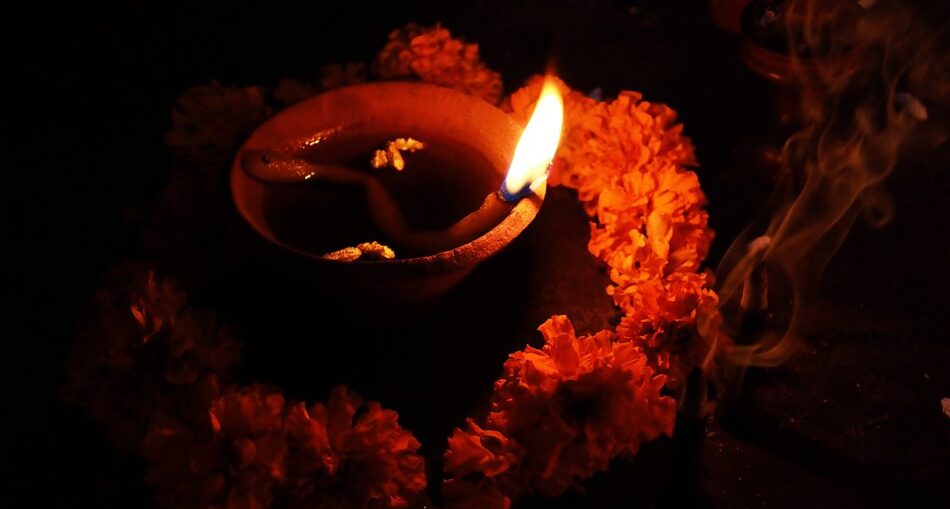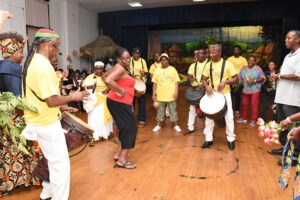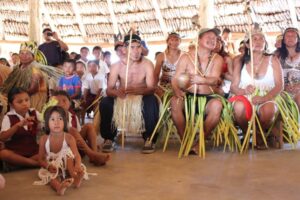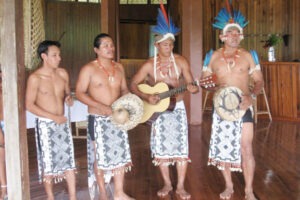Diyas are simply oil lamps typically made from clay, lit by a cotton or cloth wick soaked in ghee or oil. In Guyana, Diyas are very common in the Hindu religion and its numerous rituals, practices and religious festivals. On the even of Diwali or Deepavali, you will find many houses and streets throughout Guyana awashed in the soft, golden, glow of the lights of these beautiful clay pieces on the religious holiday. Diyas are lit on the darkest day of the year, to spread light. The Diya is known by several other names including diyo, deya, divaa, deepa, deepam, and deepak. In Buddhism, a similar lamp called the butter lamp in used in offerings.
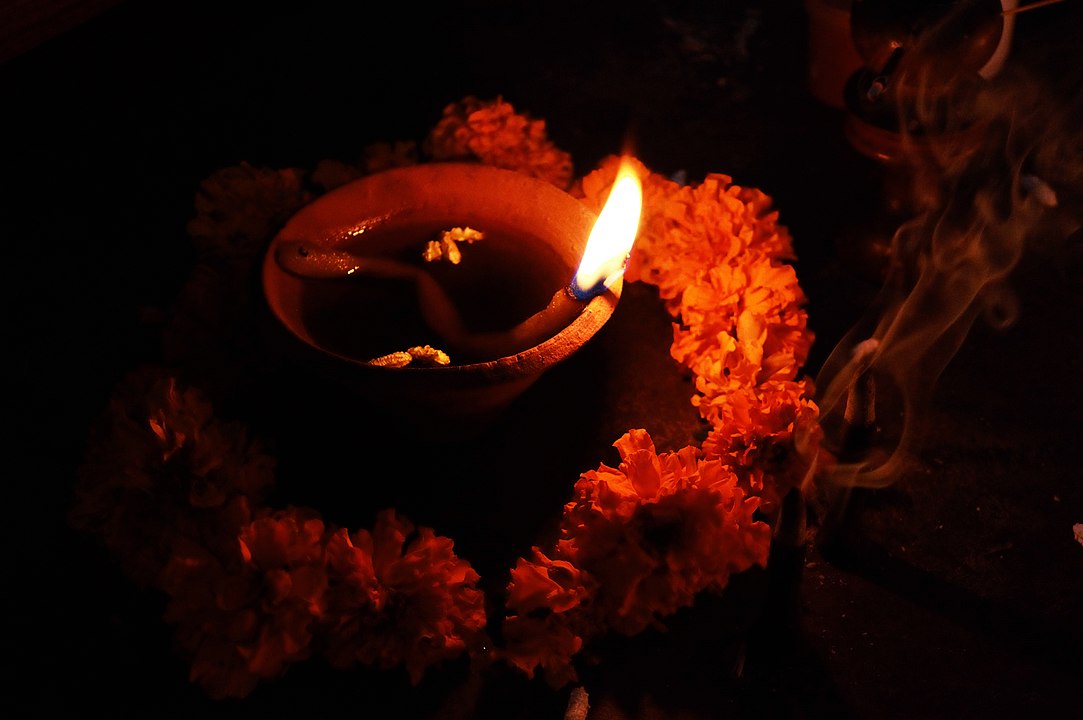
Diya – Photo By Sakshverma – Own work, CC BY-SA 4.0, https://commons.wikimedia.org/w/index.php?curid=53885690
Origin of the Diya
The Diya originated on the Indian sub-continent where to date it is used in many homes, especially for religious activities and festivals.
Description of the Diya
The clay Diya resembles a cup, wide at the top, with a narrow bottom. There is an indent in the side which creates an opening to lay the wick. The clay Diya is temporarily used for special occasions like Diwali and is the most common type of Diya is made of clay, however, there are a few variations around the world. A brass Diya known as Samai is commonly found in temples and homes. A Samai is able to hold up to four (4) wicks, braided cotton strands. Other designs allow the oil lamps to use as much as seven (7) wicks. In Guyana, the wick is typically made from cotton cloth or cotton wool. Around the world, wicks are made with a number of materials including banana stem fibre, yellow sari, rose water-dipped cloth, lotus stem, new yellow cloth or red cotton cloth, all having various religious significance.
Interesting Tip
- The word Deepavali means a row of lamps (Deepon ki avail).
- It is believed that the type of wick used and the direction a Diya is lit can influence your life.
Traditional Uses of the Diya
- Clay Diyas are often used temporarily as lighting for special occasions, while Diyas made of brass are permanent fixtures in homes and temples. Especially in Diwali, Diyas or candles are representative of enlightenment, knowledge or wisdom.
Religious Uses of the Diya
- Diyas are also lit in birth-related Hindu rituals.
- In the Hindu temples, a Diya is used during a religious practice called an aarti, to bless the worshippers. During Diwali, Hindus around the world light their Diyas which is of deep significance to the religion. The lighting of Diyas represents the return of Lord Rama and his wife, Sita.
- In addition to lighting the way home for Lord Rama, essentially it represents the conquering of evil i.e. getting rid of selfish thoughts. The oil in the Diya represents the dirt of the mind, like jealousy, hatred, lust and greed, the negative emotions humans are susceptible to. In Hinduism, the cotton wick represents the soul.
How To Make A Clay Diya
Materials:
- 1/2 cup wheat flour
- water
- 1/4 cup oil
- glue
Optional: paint, paintbrushes, beads/decorative items
Steps:
- Add flour to a large bowl then add water slowly while kneading flour.
- When flour gains consistency of dough, separate into three (3) balls.
- Take one ball and roll into a ball once more.
- Shape dough into a bowl shape.
- Pinch one tip of the bowl to create a space for the wick to be placed.
- Repeat steps three to four (3-4) for the remaining two balls.
- Add some oil and a wick and enjoy your Diya!
Diyas in Guyana
Like many other traditions the East Indian brought to them to Guyana, the Diya is one of the most important items in the religion. Every Diwali, hundreds of Hindu homes light Diyas in celebration of ‘good over evil’. However, in typically Guyanese style, many other Guyanese celebrate and look forward to the festival.
Article References
- https://www.triptobhutan.com/butter-lamp.html
- https://en.wikipedia.org/wiki/Diya_(lamp)#:~:text=A%20diya%2C%20diyo%2C%20deya%2C,Diwali%20or%20the%20Kushti%20ceremony.
- https://en.wikipedia.org/wiki/Oil_lamp#Hinduism
- https://medium.com/@psychicramnath/lighting-diyas-in-these-ways-will-attract-goddess-lakshmi-and-keep-away-the-evil-from-your-house-977cce0ab4c9
- https://zeenews.india.com/exclusive/diwali-significance-of-a-diya_5820.html
- https://findwords.info/term/diya
- https://www.thingsguyana.com/diwali-the-5-days-of-celebrations/
- https://www.wikihow.com/Make-Diwali-Oil-Lamps
- https://www.instructables.com/Handmade-Decorative-Diya-Oil-Lamps/

